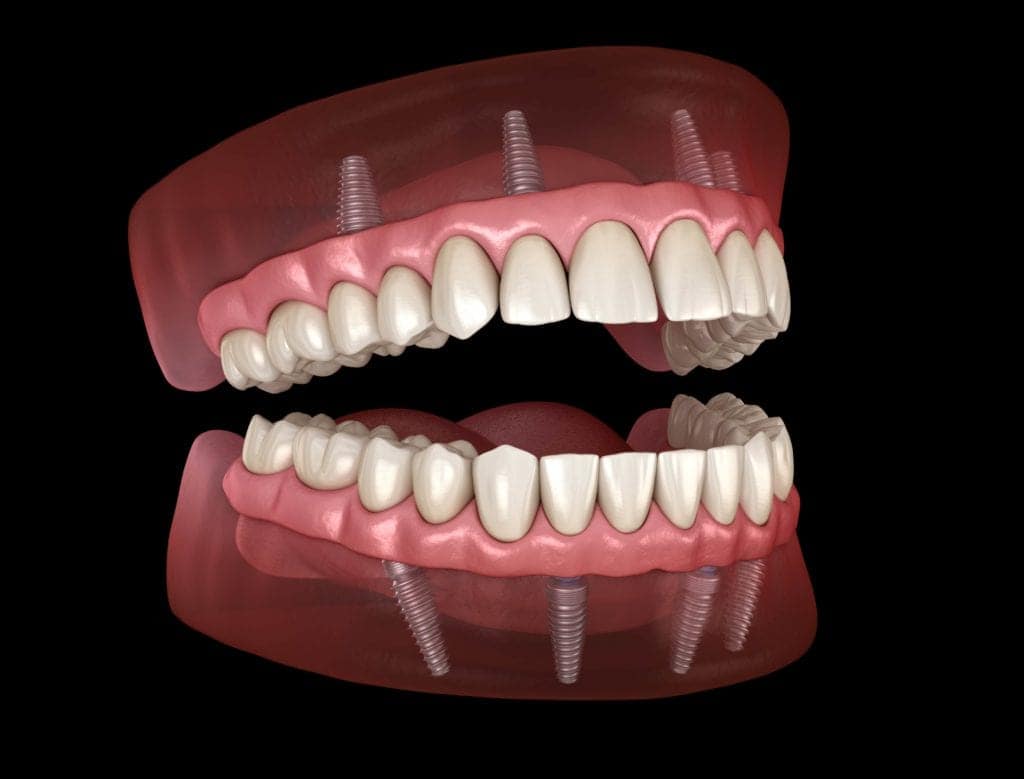If you have a tooth that is severely decayed or damaged and is in need of extraction, or you have gaps in your mouth from missing teeth, your dentist is likely to recommend dental implants. Dental implants are a popular restoration method for replacing missing teeth. To understand how dental implants work, you first need to understand their basic structure.

Dental Implant Structure
Dental implants are composed of three main parts: the dental prosthetic, a connector piece (abutment), and the implant screw. The implant screw is what sets dental implants apart from other restoration methods. Made of titanium, a biocompatible material, dental implant screws are embedded into the jawbone to act as artificial tooth roots.
Therefore, dental implants work by replicating natural tooth roots. They anchor the dental prosthetic securely and allow for an almost complete restoration of function because of their strength. This also prevents the dental prosthetic from shifting while speaking or eating, as well as decreases the risk of the restoration falling out.
Additionally, dental implants also provide the same type of stimulation to the jawbone as natural tooth roots. In order to maintain adequate bone mass, the jawbone must be stimulated by the force of chewing. Without this stimulation, the body will begin to absorb the bone mass in a process known as resorption. Since dental implant screws sit inside the jawbone, they provide the same stimulation as tooth roots and ensure the jawbone maintains its bone mass.
How Dental Implants Work for Different Cases
Now that you understand how the structure of dental implants affects the way they work, let’s take a look at how dental implants work for different cases. For starters, dental implants can be used to restore a single tooth, multiple teeth, or an entire mouthful of teeth. How is this possible? It all depends on the type of dental prosthetic used in coordination with the implant screw.

Dental implant screws can support three types of dental prosthesis: crowns, bridges, and dentures. In cases where a single tooth is missing, a dental crown is placed atop a dental implant screw. When multiple adjacent teeth are missing, a dental bridge can be used. This is known as an implant-supported bridge and is composed of one or more fake teeth with an implant-supported crown on either side. Finally, an implant-supported denture is used when an entire arch of teeth need to be restored.
Implant-supported dentures are sometimes referred to as “all-on-four” implants because most dentures are supported by four dental implants. However, there may be some cases that require more than four implants for proper stabilization. Implant-supported dentures can replace a single arch or both arches. When both arches are replaced, it is known as a full mouth reconstruction, rehabilitation, or smile makeover. For a full mouth rehabilitation, about eight dental implants are needed; four in the top arch and four in the bottom arch.
Overall, dental implants work because their structure closely resembles natural tooth roots. This allows them to provide the same type of strength and stimulation as natural tooth roots in order to restore function and preserve the jawbone. Additionally, dental implants can work for a variety of dental cases and can be used to replace a single tooth, multiple teeth, or an entire mouth full of teeth.




